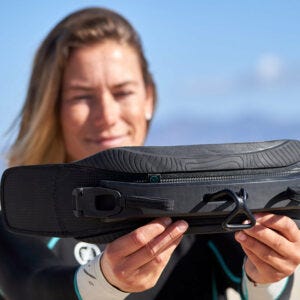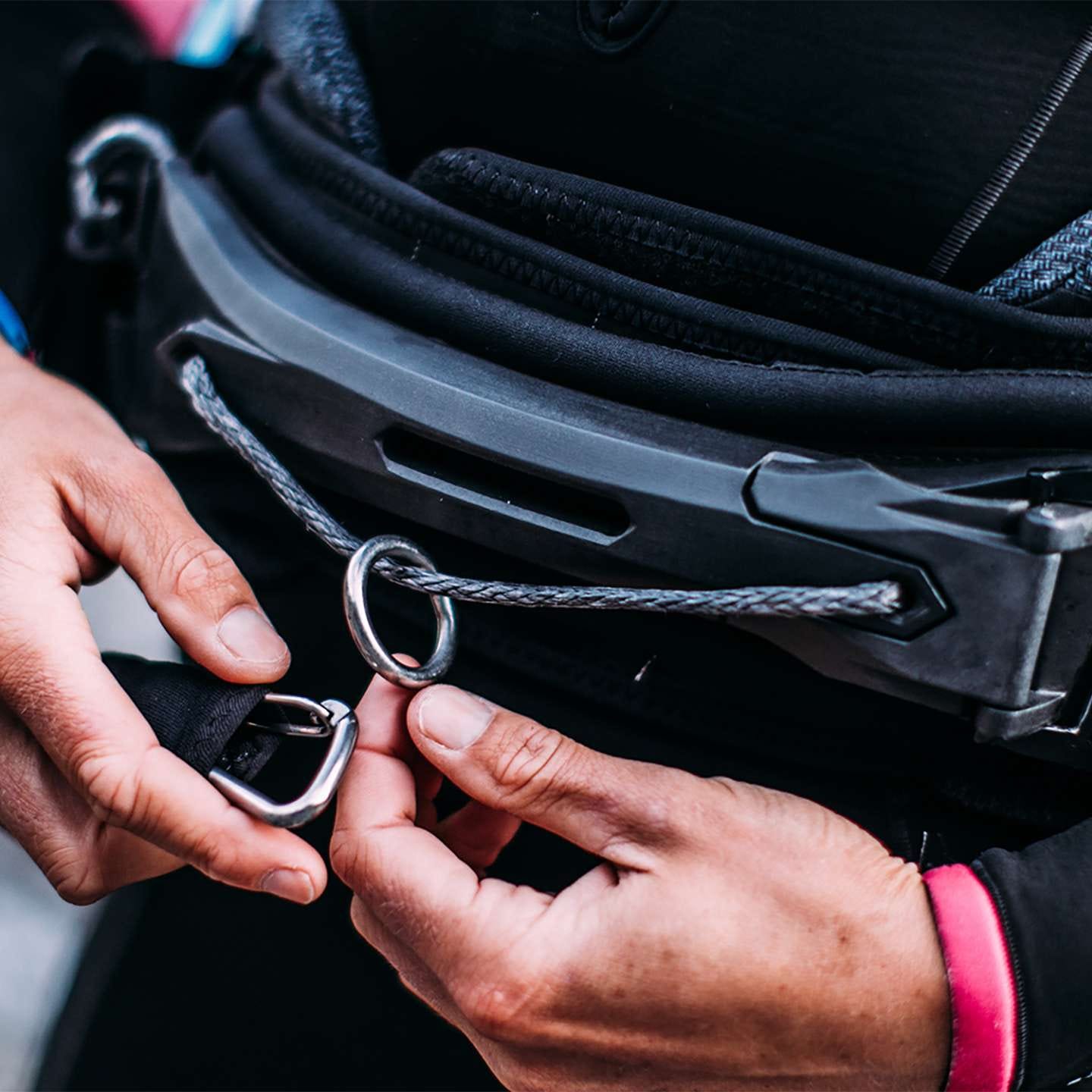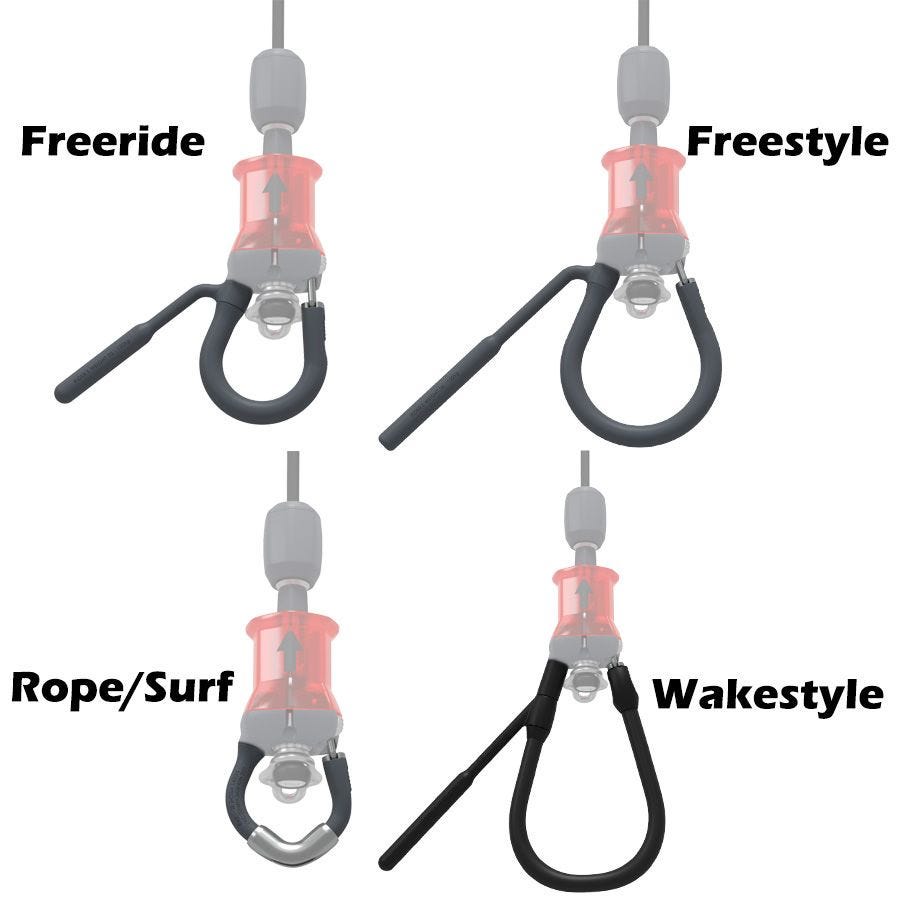Spreader Bars and Chickenloops
In today’s episode, I want to highlight the different ways you can attach your kite bar with a chicken loop to your harness.
First, let’s clear up a common misconception: People often confuse kite bars and harness spreader bars. The kite bar is the device you use to steer the kite, while the spreader bar is the front part of your harness, featuring a hook or rope where you attach the chicken loop.
Types of Spreader Bars
There are two main types of spreader bars:
Hook Spreader Bar – Used by over 90% of kitesurfers, this is the standard option found in kite schools. It offers a fixed connection, keeping the kite bar consistently positioned in front of you for better control. This makes it ideal for most disciplines except wave riding and foiling.

hook spreader bar Rope Slider Spreader Bar – Designed for disciplines requiring more body movement, like wave riding and riding in switch/blind positions. The rope allows the chicken loop to slide, reducing the need to twist your body as much. However, it provides a less direct feel and requires regular checks for wear and tear.

rope spreader bar
Harness Compatibility & Adjustments
Different spreader bars attach to harnesses in various ways, so ensure compatibility between both parts. Older harnesses use adjustable straps, which fit most body sizes but may loosen during a session. Newer models feature e.g. ratchet systems for a more secure fit.
Chicken Loops & Kite Bar Attachment
To connect your kite to a hook or rope, your kite bar must have a chicken loop. These come in different styles:
Freeride Loops – Standard on most kite bars, designed to stay hooked in.
Freestyle/Wakestyle Loops – Larger for easier unhooking.
Wave Riding Loops – Also larger but often made from coated or metal material for smooth sliding on a rope spreader bar.
I hope this article helps! Let me know if you have any questions. 😊





